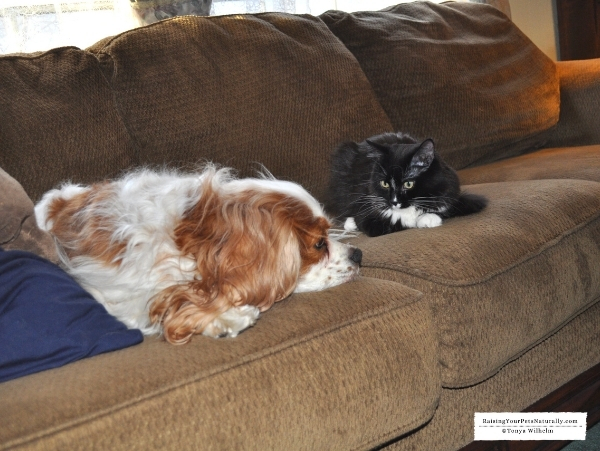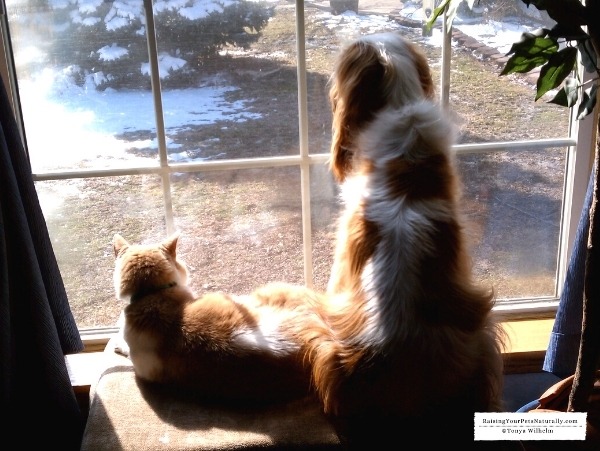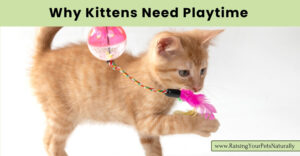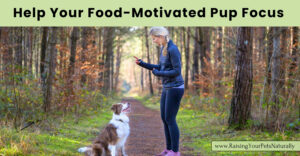Google Adsense—>

Dogs and Cats Living Together

Many people have harmonious households that include both dogs and cats. They get along, play well together and even nap together. But living with both cats and dogs does have a few considerations.
A typically well-mannered dog can lapse into what is called “predatory drift” during normal play. Predatory drift is when a normal game of play, such as a chasing game, shifts over to a dog’s predatory instinct. This “drift” can cause a dog to go into a predatory mode and attack the cat. It can happen suddenly, without warning, when you least expect it. Even highly socialized dogs can drift into a predatory attack mode, particularly when a dog is over-aroused or chasing.
Here are 5 things you can do to ensure a good relationship between your dog and cat:

- Closely monitor interactions between your dog and cat. A cat can easily be injured in a moment’s time. Cats can become very stressed and may start to show signs they are unhappy by displaying aggression, hiding, or not using the litter box.
- Make sure your cat has a dog-free area to sleep, eat, drink, and use the litter box. This should be accessible to your cat at all times. Make sure the cat’s litter box is not near the sleeping and eating area.
- Your cat must have plenty of high places that he can retreat to. Extra-tall dresser bureaus, floor to ceiling cat trees, and tall bookshelves are excellent choices. But make sure they are sturdy, especially if your dog may jump at the bottom when your cat climbs up!
- Baby gates are almost always necessary if your dog is highly focused on the cat. Place all baby gates about 6 inches off the ground so your cat can slip under the gate instead of having to jump over it. Running under is always easier for a cat.
- Teaching your dog a solid recall is the best training tool in this situation. This with allow you to call your dog to you before he becomes over-aroused. In the beginning stages of teaching him to come when called, start in a non-distracting (no cat in the room) environment. In a happy, upbeat tone, say your dog’s name one time and as soon as he looks at you, make silly sounds and smooches and run away. Allow him to catch up and jackpot him with his favorite treats and toy. Wow! Wasn’t that fun?! Repeat this process in different locations in the house throughout the day. Eventually, add distractions, the cat being one of them. When your dog is interacting calmly with your cat, call him away from the cat and reward him with his party. Then allow him to go back to playing with the cat. If you practice this often, you will have taught him how to come off of the cat when needed, a very important behavior for your dog to know.
But what if your dog and cat are, well, fighting like cats and dogs? Here are 5 things you can do to help improve their relationship:

- Safety first. Depending on your situation, you may need to prevent your dog from having access to your cat during retraining. Baby gates or leashes can help, or each animal having a separate space in your home, with shut doors. A basket muzzle can provide extra security during introductions.
- Setting a baby gate between two separate areas of the home can help with introductions unless your dog busts through or your cat jumps over. Your dog stays on one side, the cat on the other. Swapping rooms can also be beneficial. One day, allow your dog in the room the cat occupies while the cat is investigating the room your dog typically resides in. If this is not possible, placing a blanket on the cat bed and another on the dog bed and swapping the blankets regularly can help the dog and the cat exchange scents.
- Allow your cat to make the first move. Do not pick up your cat and put him in your dog’s face. Instead, allow your cat the freedom to move at his own free will. If your dog is overly excited, leash your dog to you. Feed your dog tasty treats as your cat walks around. By doing this, you teach your dog that it is more interesting to focus on you, rather than the cat. You can also toss your cat a piece of chicken or turkey for his brave behavior. Cats can learn, too!
- Allow your pets to have frequent breaks away from each other. In the beginning, stages, don’t push either pet past his limits. Short training sessions are best. You want to stay within either pet’s comfort zone. This may be one minute to ten minutes, it depends, on how comfortable your pets are. If you see any stress signs or signs of avoidance, it may be time to stop.
- Lastly, teach and practice a great recall, described above. A reliable recall can get your dog out of many a sticky situation.
If you are the proud parent of both a dog and a cat, you already know how much affection and love they can bring to a home. The devotion of pets is well worth the time it may take to teach them to coexist happily and safely. If you feel overwhelmed, please seek the help of a pet professional, who will be able to help with the transition. Good luck, and happy living.
Some displacement or stress signals to look for include: turning away (head, body, or eyes), ignoring the other animal as if not seeing them, tongue flicking, panting, freezing or stillness, walking or moving slowly, moving away or avoidance, yawning, sniffing the ground, scratching, or shaking off.
If your pet displays one of the stress signals, don’t panic. But if you are seeing a cluster of signals, the situation is too stressful and it’s time to take a break.
Another stress to consider is longer-term, such as altered potty habits, vomiting, not eating, or change in behavior. If you are seeing any of these pop-up, please stop and consult a professional.
Your questions or comments are welcome below.
Are you looking for even more ways to stay up to date with Raising Your Pets Naturally? Sign up for the newsletter for more tips and promotions. Don’t forget to be social and Like, Follow and Subscribe. Comments below are always welcome.
Facebook Twitter Pinterest Instagram YouTube
 |

If you found my blog helpful, please consider a small contribution. Dexter and I thank you! |
Google Adsense—>






